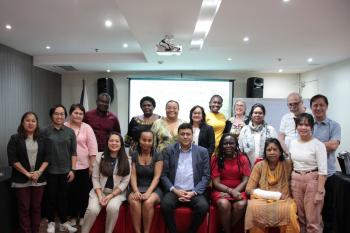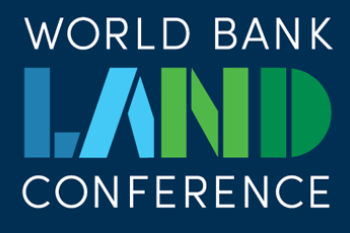
Using Technology to Strengthen Project Monitoring and Documentation of Change.
Application of Geo ODK integrated STDM tools to support Monitoring, Evaluation, Reporting and Learning in IFAD-supported projects.
Advancements within the information and technology sector are affording development projects, such as the IFAD-supported agricultural and rural development projects, new ways of doing business to improve their overall project management cycle. Many of these, such as the IFAD-supported Smallholder Dairy Commercialization Project (SDCP) and the Upper Tana Natural Resource Management (UTaNRM) Projects in Kenya are taking up innovative technologies to improve the project monitoring, evaluation, reporting and learning systems. These approaches are fostering more inclusive, collaborative and responsive processes across the development cycle right from planning, implementation, to monitoring and evaluation. The focus has been to make use of cutting-edge technology for effective project management especially in continuous evidence building to support monitoring of interventions and utilization of the evidence in analyzing outcomes. It is against this backdrop that GLTN in partnership with the two IFAD-supported focus projects in Kenya, the SDCP and UTaNRM Project, are implementing innovative use of smart phone technology to collect M&E data with an aim of establishing a geo-referenced M&E Systems for the two projects. This will incorporate land and natural resource use monitoring in the projects and real-time aggregation and effective utilization of M&E.The Upper Tana Natural Resource Management Project Pilot in Kirinyaga and Embu Counties
The UTaNRM project has implemented various interventions to arrest deforestation, institute sustainable livelihoods, including monitoring of the land use and project interventions within the Upper Tana watershed. However, tracking of these interventions has proven a challenge as data is collected, analyzed and presented in different systems. During the month of November, the project successfully piloted the use of smart phone technology (Geo ODK integrated into STDM) in collecting monitoring data of the interventions in Kirinyaga and Embu Counties out of the six counties where UTaNRM project focuses its interventions.“From the testing, the STDM enabled data collection tool has allowed the monitoring teams to capture additional information including visual data captured eliminating the conventional pen, paper and GPS approach,” noted Mr. Paul Njuguna, the Land and Environment Coordinator for the project. “This also allowed for documentation of special comments from communities, challenges, and lessons learnt” he continued.A total of 36 UTaNRM project, county mapping and sub county monitoring staff have been trained on how to use a customized Geo ODK package embedded on STDM for data collection, database management, information sharing and production of project reports. The M&E template has been customized to UTaNRM project specifications and simulated in the two counties. The project plans to roll out use of the smart phone technology to the remaining four counties in early 2018 after setting up the enabling infrastructure and developing staff capacity in other counties.
Small holder Dairy Commercialization Project- Nakuru County Geo ODK integration into STDM Training
An estimated 10 million Kenyans living in the ASALs derives their livelihood largely from livestock with over a million smallholder farmers who depend on dairy for their livelihood. Among the ‘lower end’ smallholders, holding on average one dairy cow has significant benefits in terms of household nutrition, as well as providing fertilizer for crop production, while milk sales can provide a steady stream of cash. In this regard, it is safe to posit that livestock plays important roles in Kenya’s socio-economic development and contribute towards household food and nutritional security. The SDCP has implemented numerous interventions to enhance commercialization of dairy and dairy products through the Market Oriented Dairy Enterprises (MODE) approach. However, the smallholder dairy farmers in the target counties are faced with challenges and greater risks including increasing competition for dwindling land resources in a communal tenure premise, population explosion, land degradation, climate change and land grabbing (private encroachment) resulting in a threat to food security and land rights of poor and vulnerable people. In addition, women and youth have been excluded in the management of these dwindling resources predominantly in terms of access to and control over land and other natural resources. The project has successfully tested the M&E customized templates for using in data collection on mobile phone technology (Geo ODK integrated into STDM). Two templates have been developed (Apex and Group forms) to enable collection of monitoring data of the Apex and group interventions in Nakuru County. Planning is underway to pilot within the entire Nakuru County in early January 2018, and a roll out later by April 2018. As a buildup, an induction for project, county mapping and subcounty monitoring staff is slotted for 7thDecember 2017.“The geo M&E system set up will include several variables such as their location, membership, type of activities, funding, and achieved targets among others. This should also improve impact monitoring, analysis and reporting,” noted Virginia Ngunjiri, the SDCP Nakuru Coordinator.As the Land and Natural Resources Tenure Security Learning Initiative for East and Southern Africa (TSLI-ESA) Phase II completes its work at the end of the 2017, the project is bringing on board great innovations to sustain improvements in evaluation skills of practitioners and project staff, strengthening M&E systems and practices for the IFAD-supported projects and build a culture of evidence based decision-making and strengthening demand for land tenure monitoring. TSLI-ESA is a regional project jointly implemented by GLTN facilitated by UN Habitat and IFAD as a key intervention to strengthen efforts on identifying and addressing land and natural resources tenure security issues in IFAD-supported projects in selected countries in ESA. The overall goal of the programme is to contribute to the development and integration of pro-poor tools and approaches for securing land and natural resource rights into development programmes in selected countries in Eastern and Southern Africa (ESA). By integrating use of innovation in M&E and pro-poor and gender-responsive land documentation tools, TSLI-ESA strengthens the rights of poor communities in IFAD-supported projects to land and natural resources and the revenue streams linked to those rights.
Nakuru county training participants pose for a photo at the close of the training
Submitted by/Photos: Brendah Achungo


